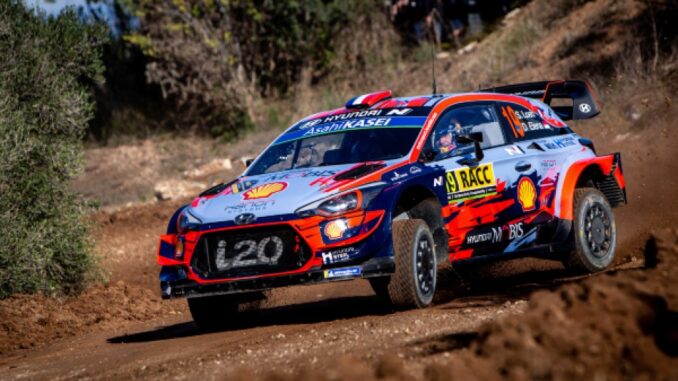
You’re driving your Ford Fiesta on a twisty back road.
Except the road is made of dirt. And it’s raining. And you’re going 20 mph over the speed limit. The engine is whining quite loudly. Your nice, efficient Fiesta somehow lost its air conditioning and instead has a roll cage with bucket seats.
You’ve suddenly donned a helmet and racing overalls and you don’t remember how. Your passenger is rapidly shouting seemingly nonsensical phrases such as, “Six right over crest 30, easy three left, 40 long right.”
What in the world is going on? One word: rallying.
Rallying is a form of motorsport that consists of driving heavily modified road cars, typically hatchbacks, along narrow public roads. These roads are typically made of dirt, asphalt, snow or even sand. They’re often lined with thick forests, right next to cliffs or even through small countryside villages.
The goal of a rally event is to drive the car as fast as possible across multiple timed stages, with each race location featuring close to 20. In essence, it’s a super insane time trial through all conditions, including rain, fog, snow and even racing in the pitch black. The winner of a rally event is the driver with the fastest combined time across all stages.
How does the driver navigate such difficult courses? That’s where the co-driver comes in. They sit in the passenger seat with a very important notebook called “pace notes.” It’s essentially a step-by-step guide on each stage that contains the degree of every turn, height of every jump and the proper gear their driver should be in. While it reads like a foreign language to non-rally enthusiasts, the information conveyed is vital to get the car over the finish line in one piece.
The co-driver must read these instructions loudly and a step or two ahead so the driver has enough time to process the information and prepare for what’s coming. Watch this crazy onboard footage and, despite getting sweaty palms, you’ll see how insanely skilled these athletes are.
The cars are subject to some of the most brutal conditions possible: constant acceleration, high jumps followed by hard landings and extremely bumpy terrain. In the event of a crash or a mechanical failure, the car can be limped (or towed) to the location’s service park, where a team’s mechanics can fix a car that’s essentially been totaled in under an hour. This includes repairing wheels bent 90 degrees, busted suspension components, shattered windshields, broken body panels and damaged engines.
Sometimes, even the driver and the co-driver have to fix their car themselves in the middle of a stage using a small set of tools.
The most popular rally organization in the world is the World Rally Championship. They race across the world (primarily Europe), often in Estonia, Italy, Mexico and Turkey. There are three “constructor teams” (teams directly associated with a car manufacturer) or ones that simply buy a rally car from a manufacturer but don’t represent them on the course.
Currently, the constructor teams, who happen to be the more dominant ones, are Hyundai, Ford and Toyota. Each of them have multiple pairs of drivers and co-drivers that compete against each other and those from other teams, just like my beloved Formula 1 (F1).
The great thing about rallying is that it’s a global sport. It can be done by anyone with a car and some mechanical know-how (plus nerves of steel). There are amateur rally events across the country where people drive anything from modified Fiat 500’s to Subaru WRX’s on insanely demanding courses.
While watching F1 cars roar around twists and turns or witnessing stock cars thunder around ovals may be exhilarating in their own right, seeing a driver thrash a compact car through narrow passages at blistering speeds is truly an astonishing feat of human and machine.

